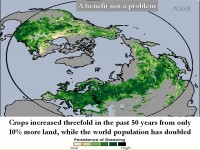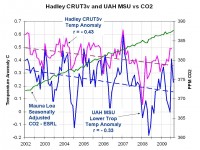By Matthew Knight, CNN
A team of international scientists led by Dr James Hansen, director of NASA’s Goddard Institute for Space Studies, say that carbon dioxide (CO2) levels are already in the danger zone. Concentrations of CO2 in the atmosphere currently stand at 385 parts per million (ppm) and are rising at a rate of two ppm per year. This is enough, say the scientists, to encourage dangerous changes to the Earth’s climate.
As a result we risk expanding desertification, food shortages, increased storm intensities, loss of coral reefs and the disappearance of mountain glaciers that supply water to hundreds of millions of people. The Aletsch glacier in the Alps. Melting of mountain glaciers is accelerating worldwide.
The report, “Target Atmospheric CO2: Where Should Humanity Aim?” appears in the latest edition of the Open Atmosphere Science Journal and brings together the expertise of ten scientists from the United States, the UK and France. It is a departure from the previous climate estimates which predict that perilous CO2 levels will be reached later in the century. Drawing on improved paleoclimate records and current global observations has prompted the authors to reach new conclusions about what constitutes a safe level of CO2.
Dr Hansen told CNN: “In the paleoclimate data, the Cenozoic data is the most alarming—burning all the fossil fuels clearly would send the planet back to the ice-free state with sea level about 250 feet higher.” Hansen thinks these sorts of changes would take several centuries, but he said we would have to deal with a “holy mess...as ice sheet disintegration unfolded out of our control”.
In light of the new data the authors believe that merely stabilizing CO2 emissions might not be enough to avoid catastrophic changes. “Humanity must aim for an even lower level of greenhouse gases”, the report concludes. To achieve these reductions they propose phasing out coal-fired power stations by 2030 and scaling down the use of unconventional fossil fuels like tar sands. Reforestation programs on degraded land and instigating the widespread use of natural fertilizers could also help to draw down CO2 by around 50 ppm. Dr Hansen says it’s impossible to say when we will reach the point of no return. See story here.
Icecap Reality Check: In actual fact, the change in CO2 is natural and due primarily to warming oceans. As Dr. Segalstad has said you could burn all the fossil fuels on the planet and the CO2 would not rise more than 20% more due to the fact the oceans are an infinite buffer. The enhanced CO2 has allowed for a greening of the middle latitude, more reliable precipitation (from the hydrological cycle) and more drought resistant plants and crops and the ability to feed more of the world’s population. In greenhouses, they pump in CO2 to 1000 ppm or higher to get more growth. Most all of the warming in the 1980s and 1990s was at night and in the winter in higher latitudes, which has been welcomed.

See larger NASA image here
Since 1998, temperatures stopped rising and since 2002 have been falling. It appears the only point of no return is Hansen objectivity.

See larger image here




